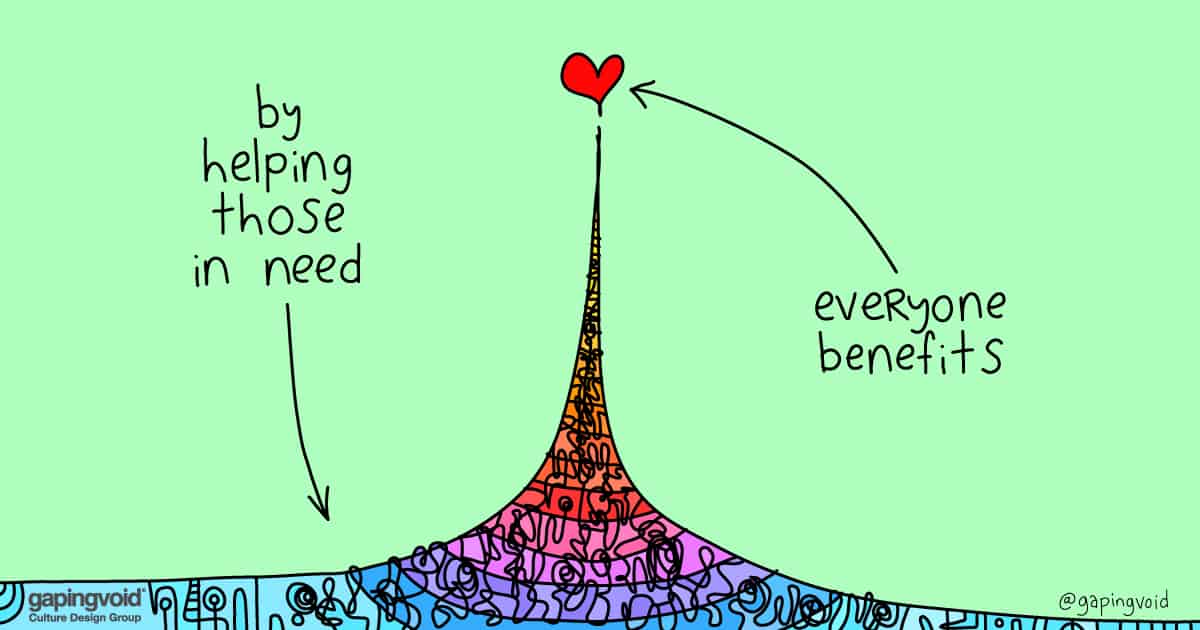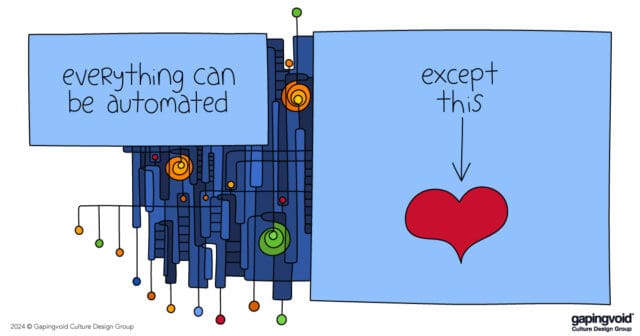
Joyce Raby is the Executive Director of the Florida Justice Technology Center. FJTC’s mission is to increase access to justice through the innovative use of technology.
As we settle — as best we can — into a new normal work life that includes remote/virtual offices, I want to speak a bit about how I see this experience as an opportunity to strengthen, renew or even create from scratch a positive and compassionate company culture.
We have lost the ability to see each other at the coffee pot or over lunch or on the way into a meeting; we have lost our ability to socialize with each other in real life. Regular socialization is the key way a company culture gets created and maintained; especially in organizations where company culture is not intentionally developed.
Up to now you may or may not have thought about your organizational culture beyond stating your mission. I once heard an executive director of social services non-profit say something to the effect of “we save all our empathy for our clients; we rarely have compassion for each other”. In the era of Covid-19 and other potential pandemics which force us physically apart, it is critical to nurture your organizational culture intentionally and deliberately.
Culture is the sum total of the social norms of your organization. Those norms are engendered and strengthened through example and repetition. If your colleagues can’t see you and interact with you (hello video conferencing) it will be harder for everyone to maintain and participate in a common culture. Without some direct, intentional strategies for maintaining a positive, compassionate culture (I am assuming you want a positive, compassionate culture), individuals will provide their own context for any action you take — and you may not like the context they create.
Brene Brown — research professor at the University of Houston -talks about “the story I am making up” as one of life’s great hacks for lasting relationships. You can use that phrase at the beginning of a sentence to share your experience or “read” of a situation; and acknowledge that you are pretty sure it isn’t 100% accurate. Her point is that everyone will fill in what they think is happening in a situation to provide context and meaning to their experience. These stories can be far afield of what is actually intended. When you are interacting in person there are usually a number of small, daily moments that can inform and course-correct erroneous assumptions about behavior. In the virtual world, those moments may not exist.
I suggest that leadership take a moment — yes right now — to contemplate and work with your teams to articulate what the organizational culture is; what do you stand for as a group; what do you value? This discussion can provide a common vocabulary your team can use with each other to support and foster a positive and compassionate culture in the absence of in-person interaction.
One tool you can use to accomplish this is a Culture Wall™. We created a Culture Wall™ at FJTC to illustrate our organizational culture. It allowed us as a group to discuss and identify what was important to us as a company. This was our culture wall.
Gapingvoid created the images for us and we used the wall in a variety of ways:
- annual retreat discussion; are these still valid? do we feel the “how” of what we do still aligns with the “what” of what we do? Do we need to change our culture to reflect something in our evolution as a company?
- project selection; does this work align with our culture? does this partner align with our culture? will this project further our culture?
- new employee orientation; I would walk new staff through each of these tiles and share with them what they meant and answer questions. It was a great way to bring someone on board with our values
Communicating a message using images is far more powerful than just words. Think of brand names — would Nike be what it is without the swoosh? The creation of the culture wall itself forced us as a group to articulate for each other why each tile was important and how that tile would manifest in our day to day work lives.
Why is company culture so critical right now? As so much of our world is rapidly changing, as each day brings an opportunity for some fresh confusion, a positive and compassionate company culture can serve and support your people. In our rush to find ways to serve our clients; let’s not forget to serve each others.
|
|
|
|
|
|




